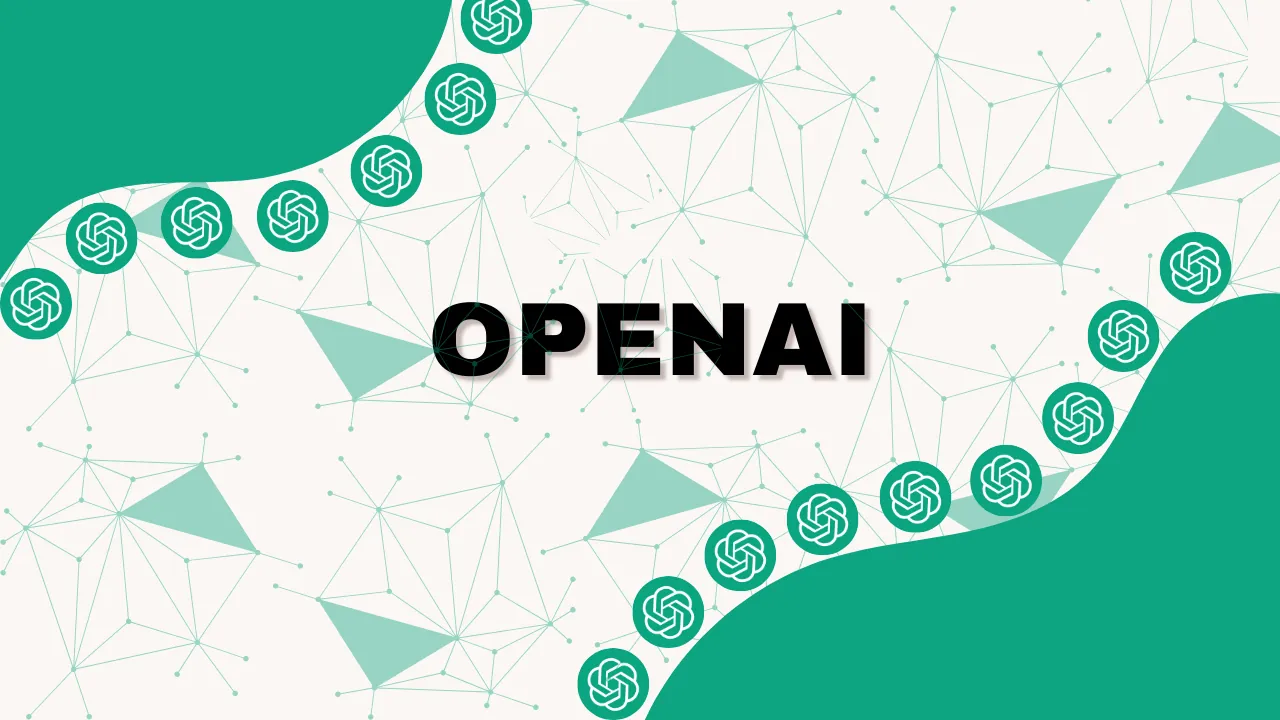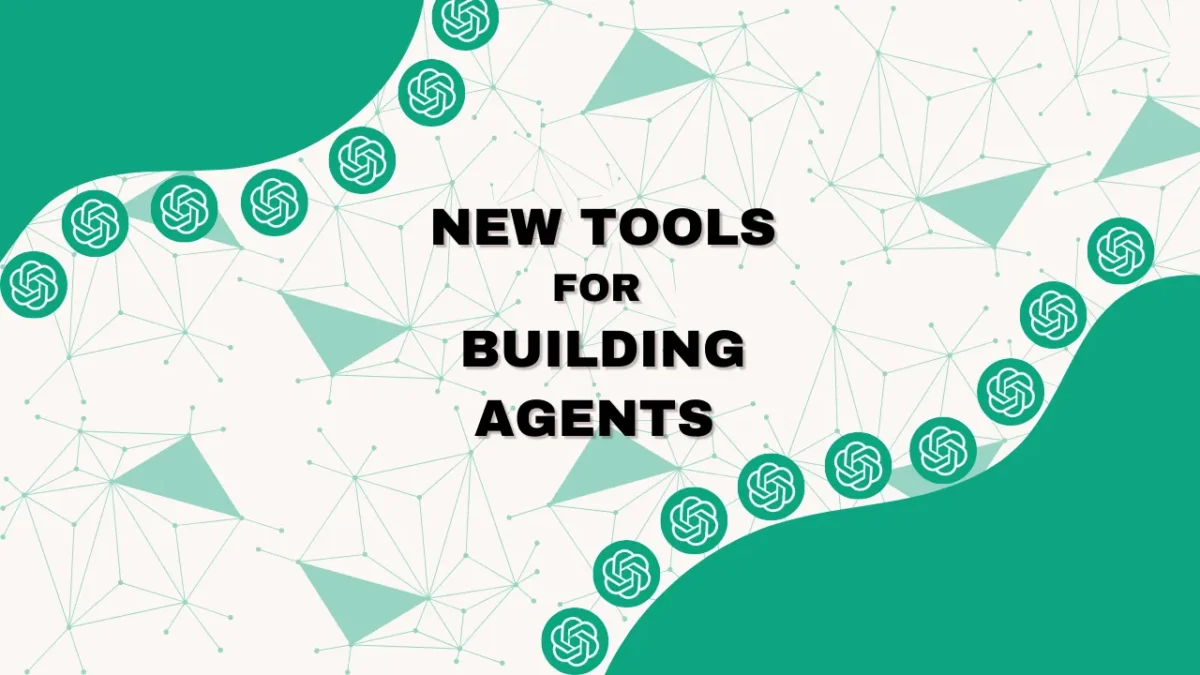OpenAI’s New AI Toolkit Builds AI Agents Effortlessly
OpenAI’s new suite of tools is designed to transform how developers build and deploy autonomous agents by streamlining the creation of complex, multi-step workflows.
These AI agents are intended to act independently on behalf of users, handling tasks that require a blend of real-time data retrieval, document processing, and even direct computer interaction.
This new approach not only simplifies the underlying architecture for these agents but also aims to make them more reliable and easier to integrate into diverse applications.
Over the years, OpenAI has been at the forefront of AI research and innovation, consistently rolling out technologies that challenge our expectations.
With past breakthroughs, they’ve paved the way for autonomous AI agents – systems that can make decisions and take actions without constant human input. This new AI toolkit builds on that legacy.

What are the Features of OpenAI’s New AI Tools for Building Agents?
OpenAI’s new AI tools for building agents are designed to simplify and accelerate the creation of autonomous systems that can handle complex, multi-step tasks. Key features of new AI tools for building agents include:
1- Responses API
At the heart of these developments is the Responses API. This API combines the simplicity and conversational fluency of the Chat Completions API with advanced tool-use capabilities that were previously only available via the Assistants API.
With the Responses API, developers can issue a single API call that orchestrates multiple tool interactions, thereby reducing the need for extensive prompt engineering and custom integration logic. The API also incorporates unified design patterns, intuitive streaming events, and helper functions that streamline access to model outputs, making it a robust foundation for building agentic applications.
2- Built-in Tools
The built-in tools integrated into the API are particularly noteworthy. For instance, the web search tool empowers agents to fetch real-time, up-to-date information directly from the internet, complete with clear citations.
This tool leverages models such as GPT-4o and GPT-4o-mini to ensure that responses are accurate and anchored in reliable sources – a critical feature for applications like research assistants or dynamic content aggregators.
If you’re looking for something similar to ChatGPT from OpenAI, try ChatGPT Free! Note that ChatGPT Free has no affiliation with OpenAI.
Another key component is the file search tool. This tool is engineered to quickly sift through large volumes of documents, supporting various file types and employing techniques such as metadata filtering, query rewriting, and reranking.
As a result, it can efficiently locate the most relevant information for tasks ranging from customer support and legal research to technical documentation analysis, thereby boosting productivity in environments where quick access to information is vital.
3- Computer Use
Equally transformative is the computer use tool. This tool allows AI agents to interact with graphical user interfaces by emulating keyboard and mouse actions. It is the technology behind Operator, OpenAI’s agent, capable of navigating web browsers, filling out forms, and executing tasks like ordering groceries or booking appointments.
Although currently available as a research preview for select developers, this capability opens the door for automation in legacy systems that lack modern API integrations, significantly enhancing the scope of tasks agents can autonomously perform.
4- Agents SDK
Complementing these tools is the open-source Agents SDK. This orchestration framework is designed to abstract away the complexity of managing both single-agent and multi-agent workflows. It provides features such as intelligent handoffs, which allow tasks to be seamlessly transferred between agents, and built-in guardrails for input validation and content moderation.
Additionally, the SDK includes observability tools that enable developers to log, visualize, and analyze agent performance in detail, making it easier to diagnose and optimize workflows.
Notably, the SDK is model-agnostic, meaning it can be used with non-OpenAI models as well, offering tremendous flexibility in building agentic applications.
From a developer experience standpoint, these advancements represent a significant leap forward. The integration of various tools under a unified API framework not only simplifies the development process but also offers a clear migration path from legacy APIs like the Assistants API, which is scheduled for deprecation by mid-2026, to the more robust and flexible Responses API.
This unified approach means that developers can now build production-ready agents with less overhead and more confidence in their scalability and reliability.
Together, these innovations leverage the latest improvements in model reasoning, multimodal processing, and safety techniques. They pave the way for AI agents that can autonomously manage tasks in industries ranging from customer service to market research, ultimately enhancing productivity and creating new opportunities for automation.
Discover how ChatGPT Search offers authicated and up to date information with the proper citication to allow you to check the validity of the source.
How Does OpenAI’s New AI Toolkit Enhance Technical Capabilities and Developer Experience?

OpenAI’s new toolkit significantly boosts technical capabilities by unifying multiple advanced functionalities under a single, streamlined API.
At its core is the new Responses API, which merges the ease-of-use of the Chat Completions API with robust tool-invocation features. This design allows developers to issue a single API call that coordinates multiple tasks – such as real-time web search, file retrieval, and computer interface interaction – thereby reducing the overhead of integrating separate services.
The built-in tools, like web search and file search, provide access to real-time information with clear citations and rapid document retrieval, while the computer use tool enables agents to perform actions that mimic human interaction with digital interfaces.
In addition to these technical enhancements, the new Agents SDK elevates the developer’s experience by abstracting away complex orchestration logic. It offers a modular framework where agents can be configured, seamlessly handed off between tasks, and monitored through integrated observability tools.
This means developers can easily trace, debug, and optimize multi-agent workflows without having to build such infrastructure from scratch. The unified design patterns and helper functions – such as those that simplify access to model outputs – further reduce the complexity of integrating these capabilities into existing applications, enabling faster development and easier maintenance.
By combining these advanced tools into a cohesive platform, OpenAI not only enhances the technical performance of autonomous AI agents but also creates a more intuitive, flexible, and efficient development environment.
This integrated approach reduces the learning curve, speeds up development cycles, and supports smoother migration from older APIs, empowering developers to build production-ready, scalable, and innovative AI-driven applications with less friction.
How OpenAI’s New Tools Reshape the AI Industry
OpenAI’s new tool, the Responses API, is now available to all developers at no extra cost and is set to replace the Assistants API by the second half of 2026. This move comes just as Chinese startups are launching AI models that they claim are on par with or even surpass leading U.S. models, all while being offered at a fraction of the cost.
Chinese startup Monica has recently attracted attention by launching its autonomous AI agent, Manus. This launch follows the positive reception of DeepSeek, which garnered praise from Silicon Valley executives and U.S. tech engineers.
Monica asserts that its Manus AI outperforms OpenAI’s Deep Research agent and is now partnering with the team behind Alibaba’s Qwen AI models.
These developments indicate a rapidly shifting competitive landscape. OpenAI’s introduction of the Responses API is a strategic response to emerging global challenges, ensuring that U.S. developers have access to streamlined, state-of-the-art tools in an era of intense international competition.
This move not only modernizes OpenAI’s offerings but also aims to counter the cost-effective, high-performance solutions coming from Chinese startups, potentially reshaping the dynamics of the AI ecosystem for the long term.
Final Thoughts
In a nutshell, this new toolkit for agents building by OpenAI brings together a host of groundbreaking features that make developing AI agents more efficient and effective. With its unified API, streamlined decision-making between quick responses and longer, context-rich interactions, and improved documentation, it’s designed to cut down development time and reduce errors.
This means developers can build smarter, more adaptable AI systems faster than ever.
The market impact is equally compelling. By offering these tools at no additional cost and planning to phase out older systems, OpenAI is not only modernizing its offerings but also strategically positioning itself against emerging competitors, particularly from the Chinese market.
This is a clear signal that the future of AI development is moving towards more integrated, agile, and cost-effective solutions.
I believe that these advancements are set to redefine how we interact with technology. Whether you’re a developer, a business leader, or an industry stakeholder, this new toolkit represents a critical step forward in making AI more accessible and capable.
Albert Haley
Albert Haley, the enthusiastic author and visionary behind ChatGPT 4 Online, is deeply fueled by his love for everything related to artificial intelligence (AI). Possessing a unique talent for simplifying complex AI concepts, he is devoted to helping readers of varying expertise levels, whether newcomers or seasoned professionals, in navigating the fascinating realm of AI. Albert ensures that readers consistently have access to the latest and most pertinent AI updates, tools, and valuable insights. Author Bio

